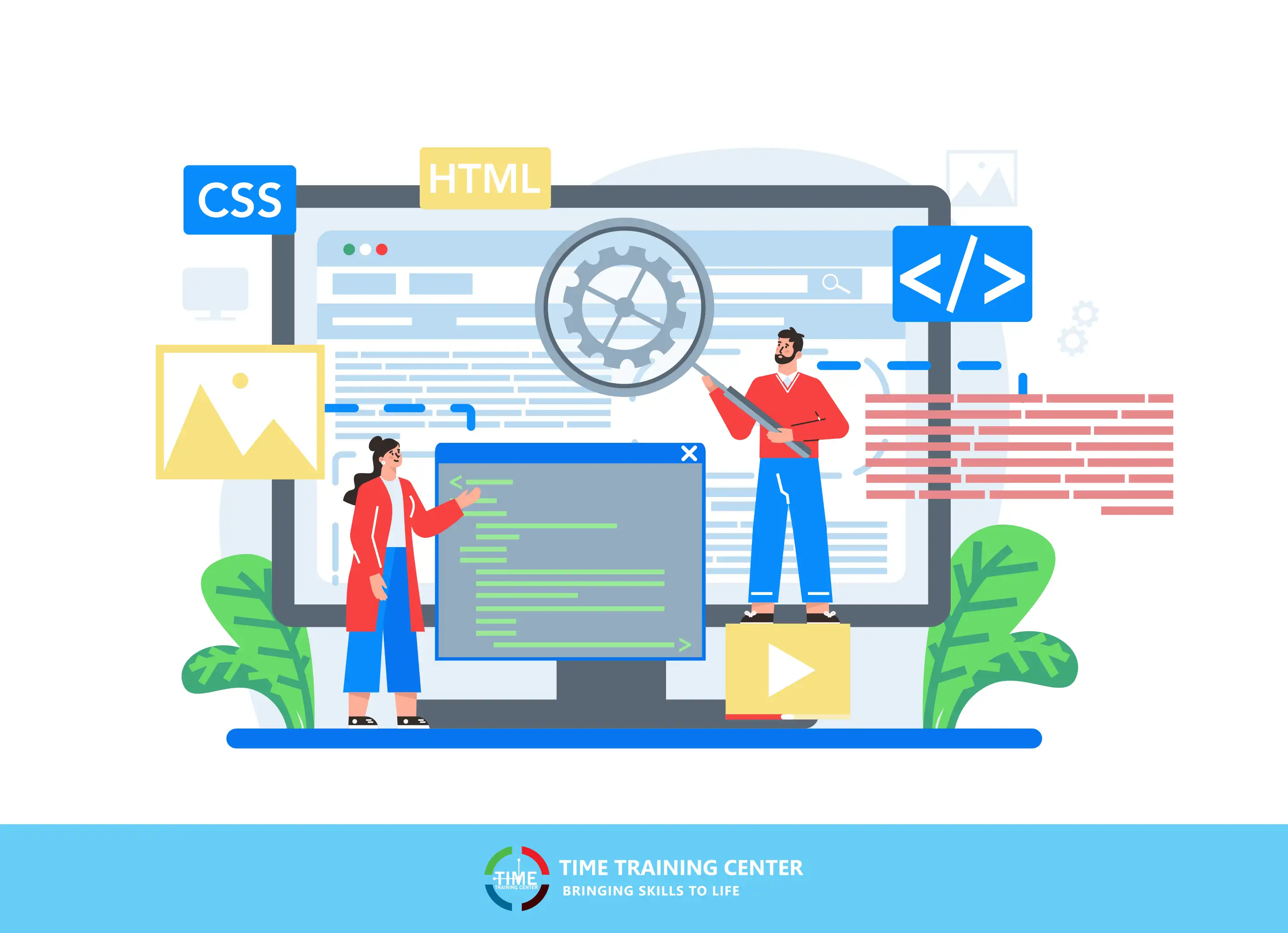In the world of web development, the backend is like the engine powering a website or application. It handles the behind-the-scenes work, managing databases, processing requests, and serving content to users. Choosing the right backend language is crucial for building a robust and efficient system. Each language has its strengths and weaknesses, impacting performance, scalability, and maintenance. So, selecting the best fit ensures smooth operations and sets the foundation for a successful digital presence.
This blog will explore the top 10 backend languages, analyze their features and suitability for projects, and empower individuals to make informed choices in backend development.
Check out the Best Web Design Tools
What is Backend Development?
Backend development involves constructing the underlying functionality of websites and applications. It centers on server-side logic, databases, and application architecture, ensuring smooth operation for users.
For instance, when a user logs into a social media platform, the backend manages tasks such as verifying credentials, retrieving profile information, and fetching recent posts. With backend development, websites, and apps could store and manage data or execute dynamic tasks. It serves as a car's engine, powering all operations behind the scenes to provide users with a seamless experience.
Top 10 Backend Languages
Backend languages play a vital role in the development of websites and applications. They determine how efficiently a system operates and how smoothly it can handle tasks behind the scenes. In 2025, developers will have many options, each with strengths and use cases. Let's explore the top 10 backend languages.
-
JavaScript (Node.js)
-
Python
-
Kotlin
-
C#
-
Java
-
Ruby
-
Swift
-
PHP
-
Go (Golang)
-
Rust
1. JavaScript (Node.js)
JavaScript, mainly through the Node.js runtime, has gained immense popularity for backend development. It allows developers to use a single language for both frontend and backend tasks, streamlining the development process.
For instance, companies like Netflix and LinkedIn leverage Node.js to power their backend systems, ensuring high performance and scalability. Node.js's event-driven architecture efficiently handles concurrent connections, making it suitable for real-time applications like chat platforms and online gaming servers.
Its rich ecosystem of npm packages further enhances development productivity, enabling developers to add functionality to their backend applications quickly.
2. Python
Python is known for its simplicity and versatility, making it a popular choice for backend development. Its readability and extensive libraries enable developers to build robust backend systems quickly.
For example, Instagram relies on Python for its backend infrastructure, handling millions of requests daily while maintaining stability and efficiency. Python's Django and Flask frameworks provide potent tools for building web applications, offering authentication, ORM, and out-of-the-box routing features.
Additionally, Python's support for data science and machine learning makes it attractive for building backend services with advanced analytics capabilities.
Also read: Java vs Python
3. Kotlin
Kotlin, originally developed by JetBrains, has emerged as a strong contender for backend development, especially in the Android ecosystem. Its seamless interoperability with Java and concise syntax make it an attractive option for building backend services.
For instance, Uber has adopted Kotlin for its backend systems, benefiting from its modern features and enhanced developer productivity. Kotlin's support for coroutines simplifies asynchronous programming, making it easier to handle concurrent tasks efficiently.
Its statically typed nature helps catch errors at compile time, ensuring more robust and reliable backend applications.
4. C#
C# has long been a staple in backend development, particularly within the Microsoft ecosystem. Its robustness, performance, and extensive tooling make it ideal for building enterprise-level backend systems.
For example, Stack Overflow relies on C# for its backend infrastructure, handling millions of user interactions while maintaining high availability and reliability. C#'s asynchronous programming model and LINQ (Language Integrated Query) enable developers to write expressive and efficient code for handling I/O-bound and CPU-bound tasks.
Its strong typing and rich standard library further enhance development productivity, enabling developers to build scalable and maintainable backend applications.
5. Java
Java remains a powerhouse in backend development, especially for large-scale enterprise applications. Its strong ecosystem, performance optimizations, and mature frameworks make it a preferred choice for mission-critical backend services.
For instance, PayPal relies on Java for its backend infrastructure, processing billions of transactions securely and efficiently. Java's platform independence and write-once-run-anywhere (WORA) philosophy make it suitable for building backend services that can run on various operating systems and hardware architectures.
Its garbage collection mechanism automates memory management, reducing the risk of memory leaks and improving backend application reliability.
Know more: Why is Java the Most Preferred AI Programming Language?
6. Ruby
Ruby, with its elegant syntax and developer-friendly environment, continues to be a favorite for rapid backend development. Its popular framework, Ruby on Rails, simplifies the development of robust backend systems.
For example, Airbnb relies on Ruby on Rails for its backend infrastructure, enabling rapid iteration and deployment of new features to millions of users worldwide. Ruby on Rails convention over configuration approach reduces the need for boilerplate code, allowing developers to focus on business logic.
Its active record pattern and scaffolding capabilities further accelerate backend development, making Ruby a compelling choice for startups and small businesses.
7. Swift
Swift, primarily known as a frontend language for iOS app development, is increasingly being adopted for backend tasks. Its modern features, performance optimizations, and strong typing make it well-suited for building backend services in the iOS ecosystem.
For instance, SoundCloud utilizes Swift for some of its backend services, leveraging its speed and reliability to deliver seamless audio streaming experiences to users. Swift's safety features, including optional and value types, help prevent common programming errors, leading to more robust and secure backend applications.
Its interoperability with Objective-C enables seamless integration with existing iOS codebases, facilitating backend development for iOS apps.
8. PHP
Despite criticisms, PHP remains dominant in web backend development, powering a significant portion of the internet. Its simplicity, ease of deployment, and extensive community support make it an attractive choice for building dynamic web applications.
For example, Facebook relies on PHP for its backend infrastructure, managing billions of user interactions daily with high efficiency and reliability. PHP's built-in web server and support for popular web servers like Apache and Nginx simplify backend deployment and scaling.
Its extensive ecosystem of frameworks and libraries, including Laravel and Symfony, provides developers with tools for building complex backend applications.
9. Go (Golang)
Go, also known as Golang, has gained popularity for backend development due to its simplicity, performance, and built-in concurrency support. Its fast compilation times and robust standard library are well-suited for building scalable backend services.
For instance, Docker utilizes Go for its backend components, benefiting from its speed and efficiency in container orchestration and management. Go's goroutines and channels enable developers to easily write concurrent code, allowing for efficient utilization of multicore processors.
Its static typing and garbage collection mechanism reduces the risk of memory leaks and runtime errors, leading to more reliable and maintainable backend applications.
10. Rust
Rust is gaining traction in backend development due to its focus on performance, safety, and concurrency. Its memory safety features make it suitable for building secure and efficient backend services.
For instance, Dropbox utilizes Rust for some of its backend components, capitalizing on its performance benefits and robust memory management. Rust's ownership system and borrow checker enforce strict rules that prevent common programming errors like null pointer dereferencing and data races, leading to more stable and secure backend applications.
Its zero-cost abstractions and predictable performance make Rust a compelling choice for building high-performance backend systems.
Conclusion
In conclusion, the top 10 backend languages offer a diverse array of options for developers, each with unique strengths and real-world applications. By understanding the features and suitability of these languages, developers can make informed decisions to build efficient and scalable backend systems for various projects and industries.
You may also like: UI/UX Design Career Opportunities
 +971 2 6713828
+971 2 6713828



